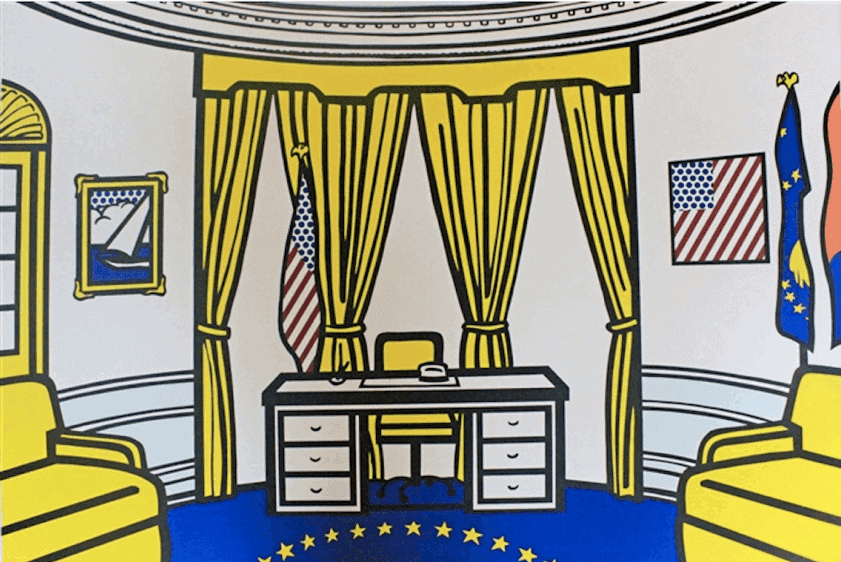What Congress taketh away, Congress giveth
(in the form of “Opportunity Zones”)

In December 2017, a sweeping tax reform was passed which radically changed the types of property eligible under US tax code section 1031, the so-called “1031 exchanges” or “like-kind exchanges”. 1031 exchanges were conceptualized as tax loopholes intended to encourage investing by allowing selling property tax-free as long as the proceeds are used to invest in another like-property. By identifying a similar work (painting for painting, sculpture for sculpture) within 45 days and completing the transaction within 180, art buyers could defer CGT.[1]
Though created in the 1920s for farmers, these 1031 exchanges have been a powerful driver of the US art market in recent years due to its application to stocks, art, Real Estate, classic cars, and franchises, among others. The new 2017 legislation voted to eliminate the 1031 loophole for essentially all property categories with the exception of Real Estate. This spawned a flurry of trading at the top of the art market just before the window for capital-gains tax-free trading closed. The new tax code may not offer to the art collector the capital gains tax exemption in the form of a 1031, but there is now much talk about how collectors may be able to still find a way to trade top-level works without shelling out the 28% capital gains tax applied to art by using “Opportunity Zones”.
“Opportunity Zones” or “O-Zones” refer to specific geographical areas in the United States that have been identified as distressed. Officially called the “Investing in Opportunities Act” the “O-Zones” is a policy-based intuitive to promote and incentivize high net worth individuals to invest capital gains in impoverished areas by offering a deduction on their tax obligations as quid pro quo. There is no limit on the amount that can be invested or the attendant amount of tax obligation that can be erased.
How does this apply to the sale of an artwork? For example, a collector is looking to sell a significant piece from their collection. The piece has appreciated $500,000 from its time of purchase. The collector can be eligible for a tax deferment on proceeds from the sale of the asset if they invest the gains in a “Qualified Opportunity Fund” (QOF) –effectively, a vehicle for investing in eligible property located in the designated Opportunity Zone. If the capitals gains are left in the QOF for 10 years, the tax obligation is effectively erased.
While the “Opportunity Zones” certainly offers benefits to economically struggling areas, the truth is that there is still a dark agenda behind this goodwill initiative. The “Opportunity Zones” were designated based on census tracts, some of which are in areas where a large amount of development activity was already taking place. In New York City alone, this includes places like the Far West Side and the Lower East Side. So, not only did Trump’s administration monopolized the tax benefits to Real Estate, but also used his power to keep his geographically convenient properties safe within this tax relief.
The question now for lawyers, accountants, and collectors is to find a way to package QOFs in a way that behooves collectors’ interest in art investment. This is why we have been working with The Museum Fund. With this new investment channel, we aim to enhance the best strategy to maximize returns while supporting the cultural institutions that shape our minds. Keep posted for further news on this inspiring project.

[1] https://www.theartnewspaper.com/news/trump-s-tax-act-offers-potential-tax-havens-for-art
Sources
“Opportunity Zones Frequently Asked Questions.” Internal Revenue Service, 11 Jan. 2019, www.irs.gov/newsroom/opportunity-zones-frequently-asked-questions.
Adam, Georgina. “Trumps Tax Act Offers Potential Tax Havens for Art.” The Art Newspaper, The Art Newspaper, 3 Jan. 2019, www.theartnewspaper.com/news/trump-s-tax-act-offers-potential-tax-havens-for-art.
Bertoni, Steven. “An Unlikely Group Of Billionaires And Politicians Has Created The Most Unbelievable Tax Break Ever.” Forbes, Forbes Magazine, 3 Jan. 2019, www.forbes.com/sites/forbesdigitalcovers/2018/07/17/an-unlikely-group-of-billionaires-and-politicians-has-created-the-most-unbelievable-tax-break-ever/#8339ef314855.
Kinsella, Eileen. “Introducing ‘Opportunity Zones’: The Trump Administration’s New Tax Break for Art Collectors.” Artnet News, 14 Jan. 2019, news.artnet.com/art-world/trump-administration-tax-break-collectors-1436485.
Sullivan, Paul. “How the Tax Code Rewrite Favors Real Estate Over Art.” The New York Times, 12 Jan. 2018, www.nytimes.com/2018/01/12/your-money/taxes-real-estate.html.
